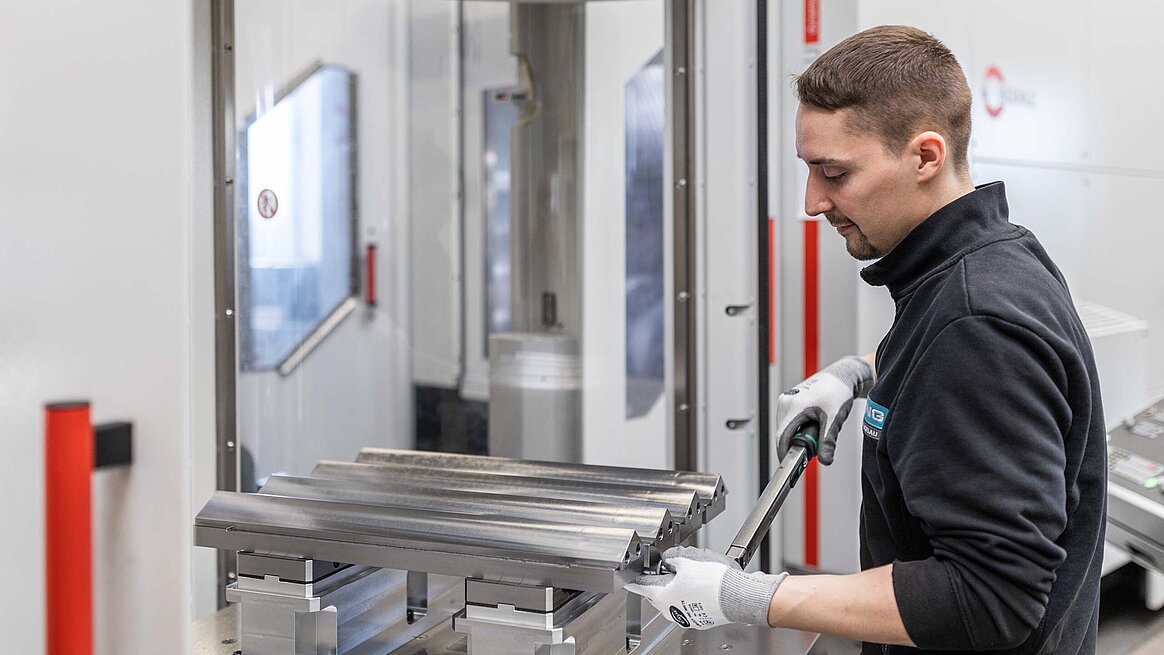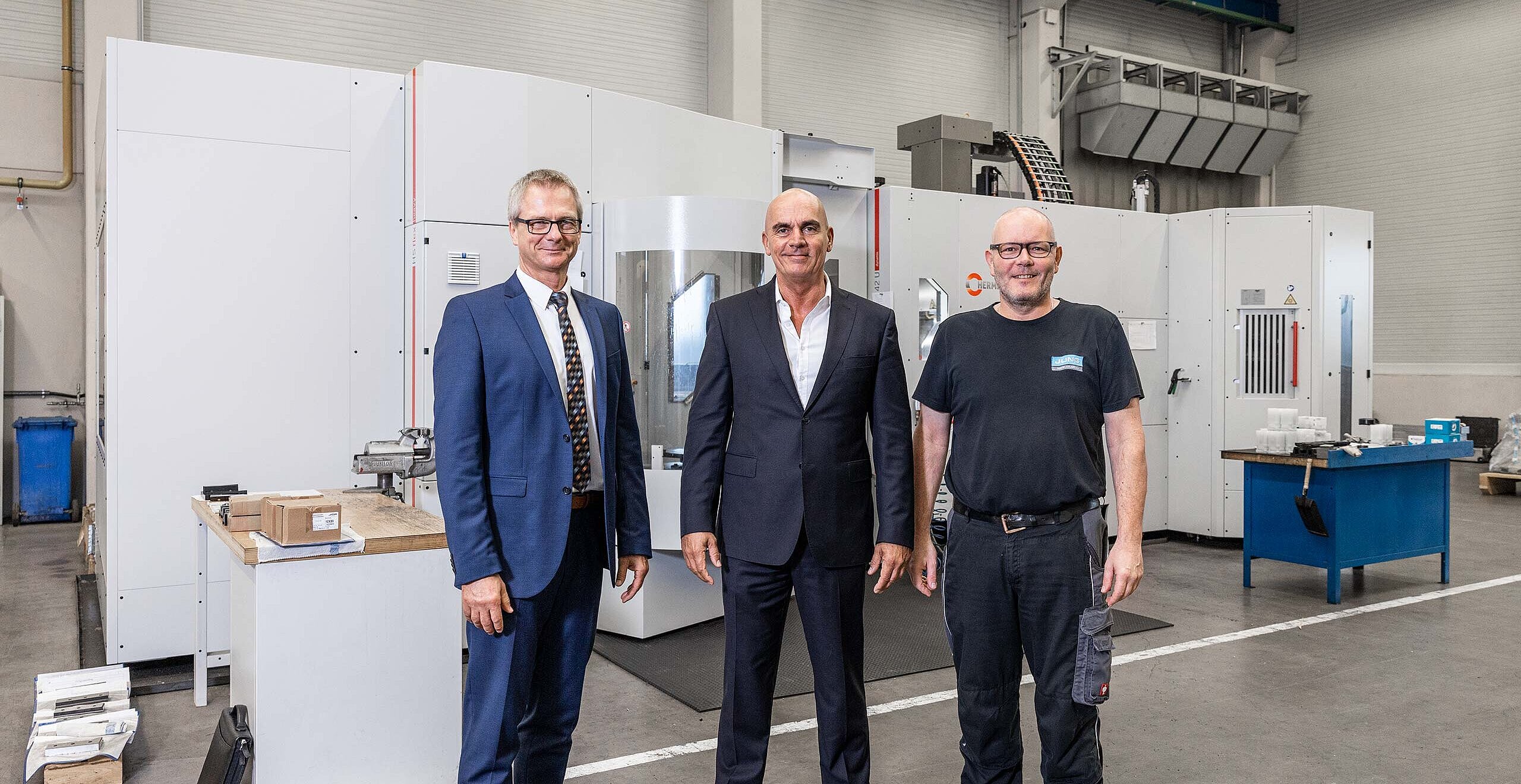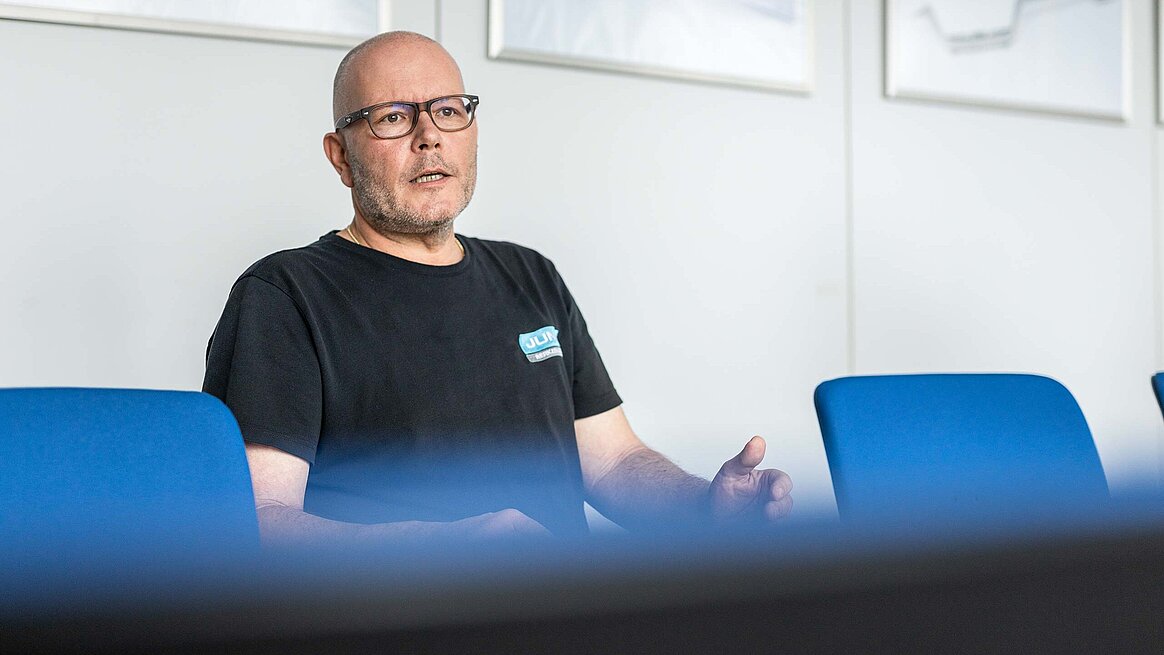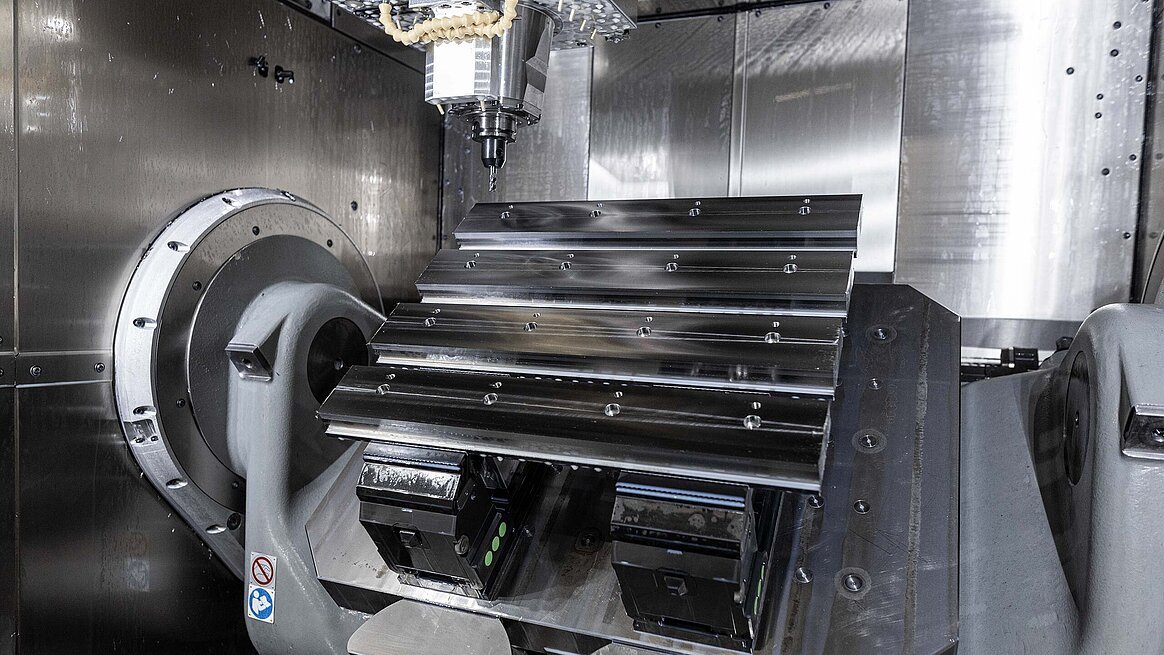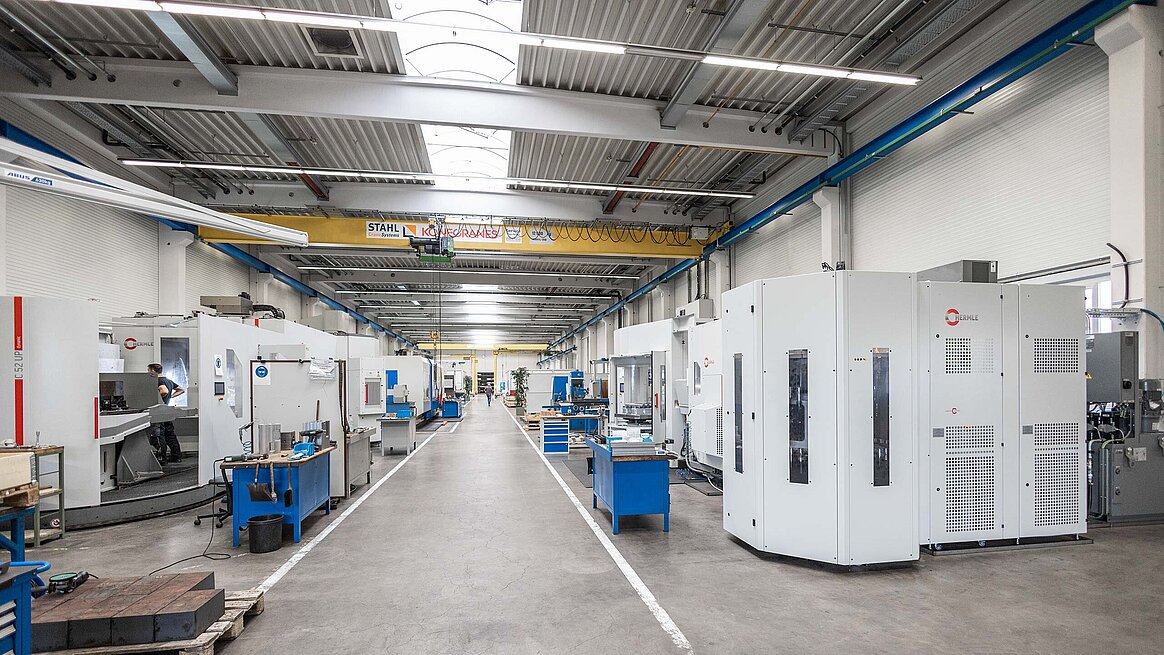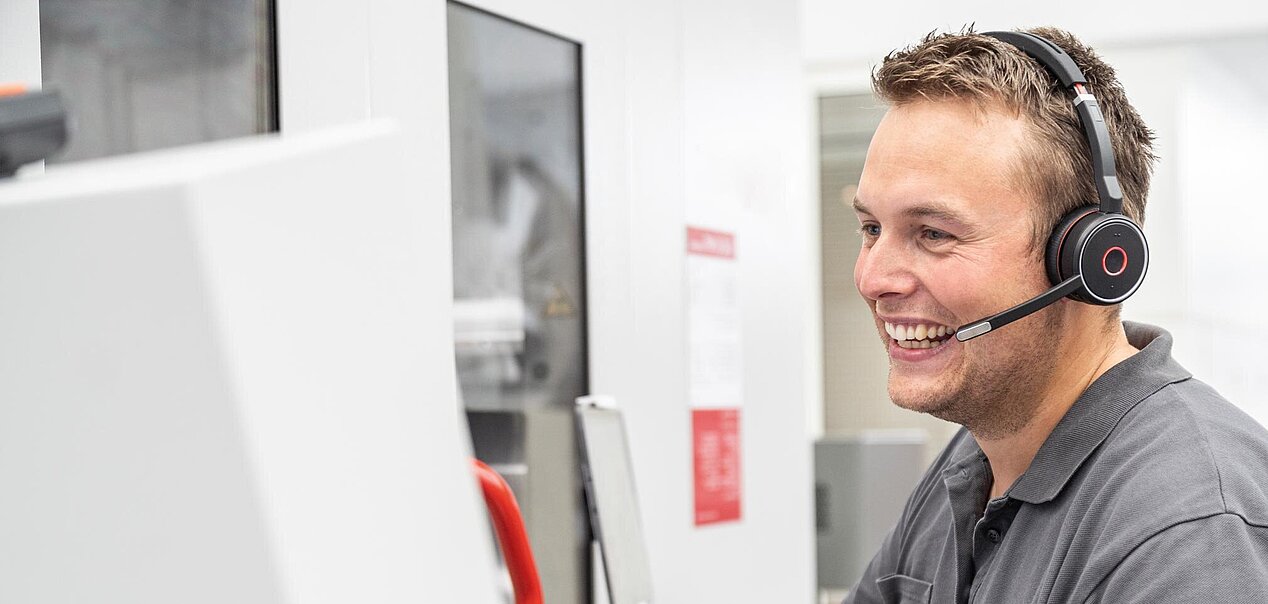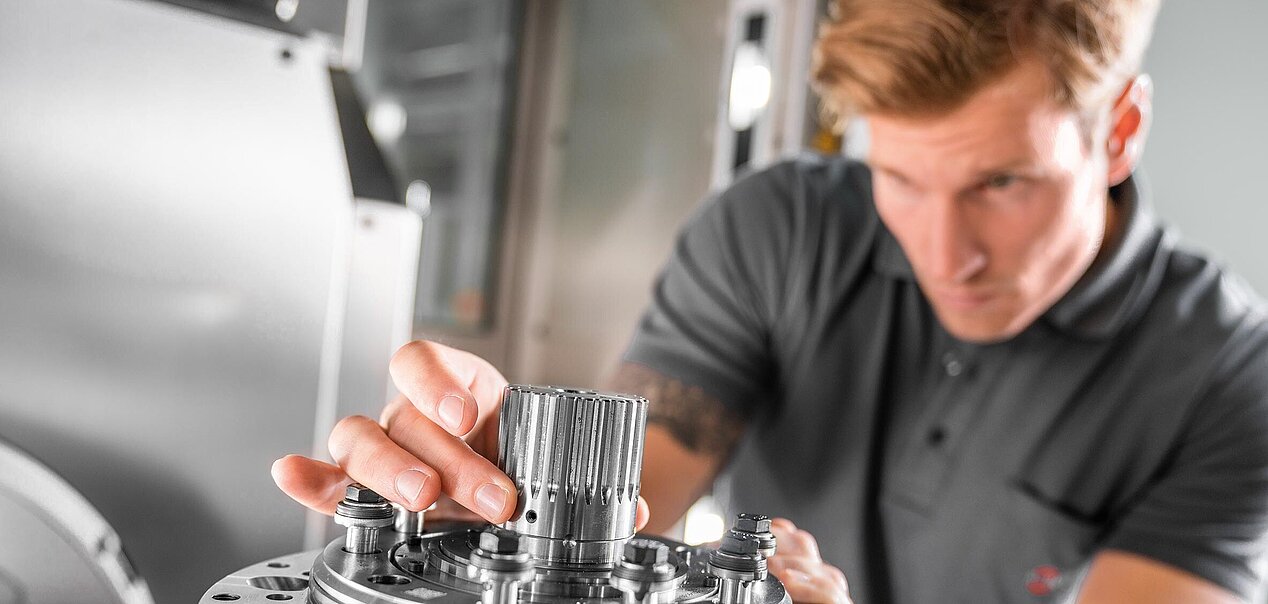C 42 Handling system HS flex heavy | Jung Werkzeugbau GmbH | Tool making
Jung Werkzeugbau GmbH is expanding its mechanical production capacity: an automated C 42 U from Hermle is set to expand the company’s three-shift operation to include unmanned night-time and weekend shifts. Those responsible for paving the way are overcoming the last optimization hurdles and installing additional safety features.
It is late October 2022, and we are visiting Jung Werkzeugbau GmbH in Ötingheim near Rastatt. A visibly proud Thomas Faisz answers our questions about the new system, whose procurement process he oversaw from the technical side. In his spare time, he plays the clarinet. Professionally, he makes sure the milling department at Jung Werkzeugbau GmbH hits all the right notes.
Under his supervision, components are produced for toolmaking and mechanical engineering applications. The former are orders from sheet-metal formers: for deep-drawing tools that are used to model stainless steel sinks, or transfer tool sets for vehicle interior parts made of aluminium. The mechanical engineering parts include components such as blade carriers for the crushers manufactured by the co-shareholder Dieffenbacher GmbH. Faisz immediately dispels any idea that the seemingly simple blade carriers are easy to manufacture: "The parts are between 464 and 648 millimetres long and are used in a ring-type cutter-block chipper – with up to 72 pieces per ring, which measures just under two metres in diameter. If we don’t work with great precision, the system will not run smoothly later on". In addition to properties such as flatness and parallelism, the drill holes must also be set precisely – in every direction. "If we are to work to within two-hundredths of a millimetre over the entire length of the component, we need a precise machine", Faisz explains.
The challenges when it comes to the tool components are different, but no less demanding. "Whereas we can produce the orders for the crushers in one go, the tool components require numerous separate machining steps. The annealing and hardening processes or electric-discharge machining cause the material properties to change and interrupt the milling process. We need know-how in both directions", explains Faisz.
What he enjoys about Jung Werkzeugbau are the continuous processes – from design to parts production, toolmaking and assembly, all the way to the first test run on the company’s own large presses. If a bend doesn’t sit right here or if the sheet metal cracks when it is formed, he looks for a solution. "At the end of the day, I can see what I’ve done", sums up Faisz.
Networked and automated
The conversation quickly turns to technical matters: Since January, a new, automated C 42 U machine from Maschinenfabrik Berthold Hermle AG has graced the production hall. Along with a C 50 U and a C 52 U, this is the third machining centre from Gosheim. "We want to remain fit for the future – with a digitalised and expanded production department", explains Billy Ege, Commercial Manager at Jung Werkzeugbau GmbH. The HACS order management (Hermle Automation Control System) incorporates Industry 4.0 technology and the option of networking the system with the production environment. For the German Federal Ministry of Economics and Climate Protection, this is a project worth promoting, which is why it is providing support to Jung Werkzeugbau GmbH as part of the investment program to modernise production in the vehicle manufacturing and supplier industry.
The new 5-axis milling centre from the High-Performance Line is automated with the flexible handling system HS flex heavy. Faisz pays close attention to ensuring that all participants document every step along the way to the "ghost shift" – from the programming all the way down to the tool service lives. He’s thinking ahead because the work done now will pay dividends, at the latest, when another new Hermle machine arrives. "By then, in principle, it will take less time to achieve our goals", says Faisz. However, there are a few outstanding issues to resolve before he can put the system to work on the "ghost shift". "Process reliability is the top priority", he remarks. For example, he and his team are optimising some of the tools and clarifying whether a different diameter will result in a better surface quality. "Although we are achieving the specified quality, some of the surfaces do not fit with the overall picture. This is not an issue for the milling machine but for the tool. The number and type of cutting edges are relevant here", explains Faisz.
